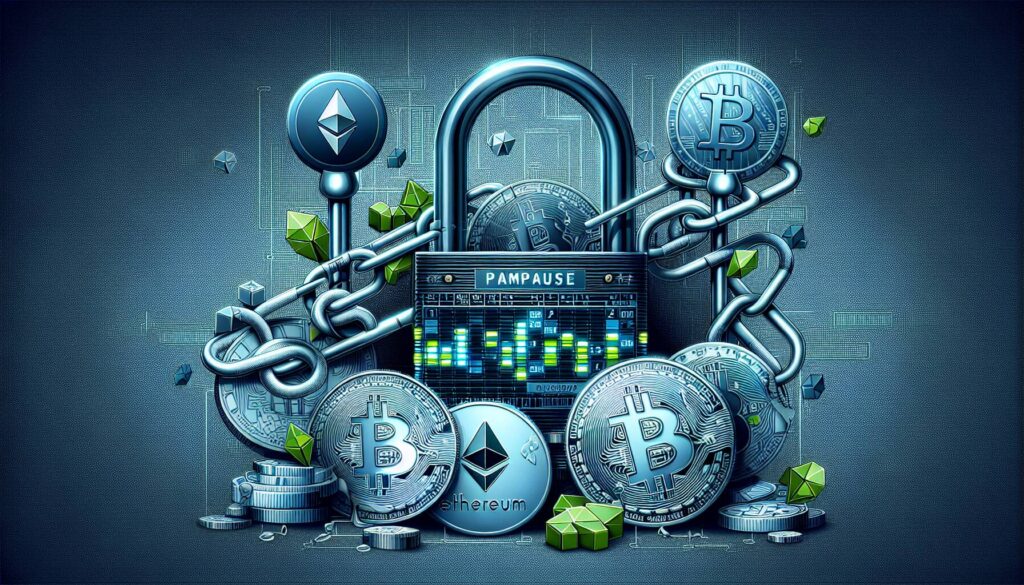S&P Dow Jones Indices has unveiled plans for a groundbreaking new financial tool: the S&P Digital Markets 50 Index. This hybrid index aims to marry traditional equity markets with the rapidly evolving world of digital assets, providing investors with a unique option to navigate the complexities of the cryptocurrency landscape. Set to include 35 publicly traded companies engaged in blockchain technology and crypto infrastructure, alongside 15 cryptocurrencies selected from the existing Broad Digital Market Index, this innovative benchmark captures the performance of both industry-leading firms and the digital tokens fueling the sector’s expansion.
The design of this index was developed in collaboration with Dinari, a platform specializing in the tokenization of U.S. public equities. Dinari plans to launch a token known as a “dShare,” allowing investors to track the index directly on blockchain platforms. This token aims to provide greater transparency and accessibility, showcasing how blockchain technology can reshape traditional investing methods.
“From North America to Europe to Asia, market participants are beginning to treat digital assets as part of their investment toolkit,” said Cameron Drinkwater, chief product & operations officer at S&P Dow Jones Indices.
This initiative reflects a larger trend of institutional investors incorporating digital assets into their core portfolios, moving beyond viewing them as mere speculative bets. The popularity of crypto-related stocks has surged this year, fueled by a wave of initial public offerings (IPOs) from digital asset companies and a clearer regulatory framework in the U.S. Notable examples include Coinbase, which has gained around 50% in value year-to-date, and Robinhood, whose stock has skyrocketed over 250% as it broadens its crypto services.
Dinari’s efforts also signify a push to enhance index investing through modern technology. Anna Wroblewska, Dinari’s Chief Business Officer, emphasized that the goal goes beyond tokenizing the index to showcase how blockchain can modernize trusted financial benchmarks.
As the S&P Digital Markets 50 Index prepares to launch, it joins a growing lineup of crypto-related indices from S&P, indicating a significant shift in the landscape where digital assets and traditional finance increasingly converge.

S&P Dow Jones Indices Launches Hybrid Index for Digital Assets
Key points regarding the new S&P Digital Markets 50 Index and its implications:
- New Hybrid Index: S&P Dow Jones Indices is introducing a hybrid index that combines traditional equities with digital assets.
- Index Composition: The S&P Digital Markets 50 Index will consist of 35 companies in crypto infrastructure and services, alongside 15 cryptocurrencies from the Broad Digital Market Index.
- Tokenization: Dinari will issue a token, the “dShare,” allowing investors to track the index on-chain with enhanced transparency.
- Institutional Adoption: There is a growing trend of institutional investors incorporating digital assets into their portfolios, indicating a shift in investment strategies.
- Market Popularity: Crypto-related stocks have gained significant traction, with companies like Coinbase and Robinhood seeing substantial stock price increases this year.
- Regulatory Clarity: Improved regulatory frameworks are contributing to the acceptance of digital assets, making them more appealing to traditional investors.
- Modernizing Index Investing: Dinari’s approach to tokenization emphasizes the modernization of index investing through blockchain technology.
- Broader Financial Integration: The launch of the Digital Markets 50 Index may indicate a merging of digital and traditional finance, potentially impacting investment practices in the future.
S&P Dow Jones Indices Set to Launch Hybrid Index for Crypto and Traditional Stocks
The introduction of the S&P Digital Markets 50 Index stands out in the rapidly evolving investment landscape, especially as it uniquely merges traditional equity markets with digital assets. This innovative approach positions S&P Dow Jones Indices at the forefront of a critical trend: the integration of digital assets into institutional portfolios. By tracking a combination of crypto-related companies and cryptocurrencies, the index promises to attract a diverse range of investors while minimizing the direct volatility associated with purely speculative crypto investments.
Competitive Advantages: One key advantage of the Digital Markets 50 Index is its balanced exposure. Investors weary of the extreme fluctuations typically seen in the crypto sector can now engage with the market more comfortably by investing in established companies alongside cryptocurrencies. This blend not only appeals to risk-averse investors but also provides a robust framework for those who recognize the potential of cryptocurrency without diving headfirst into unknown waters. Additionally, Dinari’s collaboration to tokenize the index with a “dShare” token enhances accessibility, allowing investors to interact with their investments in real-time across various blockchain platforms, ultimately bringing transparency and efficiency to index investing.
Competitive Disadvantages: However, the index may face challenges in gaining traction. Traditional investors wary of the disruptive nature of blockchain technologies might hesitate to adopt a paradigm that integrates both assets. Moreover, as institutional players begin to enter the hybrid investment arena, competition with existing financial frameworks could intensify, making it essential for S&P Dow Jones to effectively communicate the distinct value proposition of their hybrid index over established indices. The regulatory landscape remains a concern too; as regulatory clarity improves, the market could see new entrants who offer similar products, potentially overwhelming market interest and splitting investor focus.
This launch could particularly benefit institutional investors looking to diversify their portfolios without extending their risk threshold too far. Conversely, it may pose challenges for traditional asset management firms that do not adapt to the evolving market landscape, as their clients increasingly seek increased exposure to digital assets. The potential success of this index signals a pivotal moment for both traditional and digital-first investment strategies, exemplifying the ongoing convergence of these two financial realms.
















